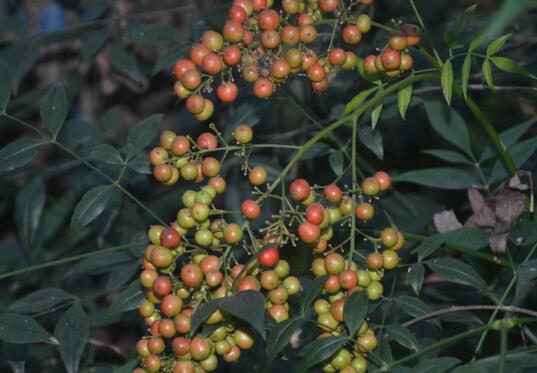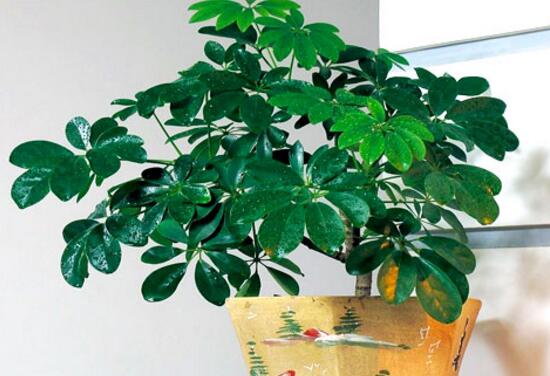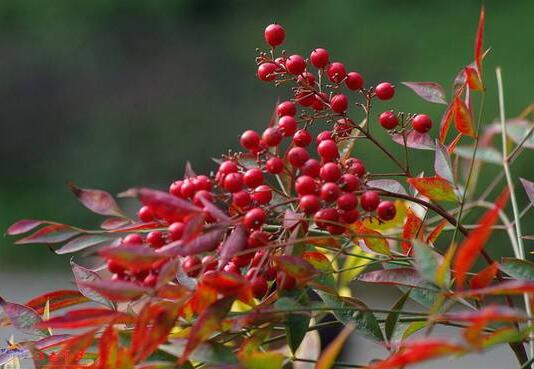How to raise bonsai of Phyllostachys pubescens, culture methods and matters needing attention / avoid stagnant water
Phyllostachys pubescens is a common woody flower in people's life. Its plant shape is beautiful and highly ornamental. However, it is not easy to raise this plant well, and there are many places that need to be paid attention to, so how to raise bonsai? What are the breeding methods and matters needing attention of Phyllostachys pubescens? Next, the editor will take you to learn about it.
First, how to raise the bonsai of southern bamboo and understand the habits

If you want to know how to raise bonsai, we must first understand its growth habits. Southern bamboos are born in a warm and humid environment, so we should pay attention to the environment when we breed. In addition, watering, fertilization and other aspects can not be careless. Details are introduced in the following Nantian bamboo culture methods and matters needing attention, let's take a look.
2. Culture methods and matters needing attention of Phyllostachys pubescens
1. Soil, using sandy soil
In the growth process of Phyllostachys pubescens, its requirements for the soil is very high, it is best to use a more fertile sandy soil, this kind of soil has good drainage and air permeability, can make it grow better, remember not to choose the soil with high acidity, otherwise it is very difficult to survive.
Note: in the process of cultivating Phyllostachys pubescens, we need to change the soil every 2-3 years, and we need to loosen the soil frequently in the process of breeding, because it is easy to harden the soil if fertilization. in addition, we also need to remove the weeds in the pot soil in time, so as not to affect its growth.
two。 Fertilize fertilizer, apply thin fertilizer frequently
In the cultivation methods and matters needing attention of Phyllostachys pubescens, fertilization is a very important point, because fertilizer is a major nutrient in its growth process. Before planting, we should put an appropriate amount of base fertilizer in the soil, which can help it through the seedling stage. after entering the growing period, it has a great demand for fertilizer, which basically needs to be fertilized 1-2 times a month. It can stop around July.
Note: when applying fertilizer to Phyllostachys pubescens, there is one thing we need to pay attention to, that is, the fertilizer must be diluted before fertilization, and the principle of frequent application of thin fertilizer must be maintained, so that it can be better absorbed. If you apply thick fertilizer directly, it is easy to burn the plant and cause its leaves to turn yellow.
3. Humidity, maintain humidity 50-70%
Phyllostachys pubescens likes to grow in a warm and humid environment, if the humidity of the culture environment is too low, it is easy to make the leaves dull, yellowing, shedding and other bad phenomena, so it is very important to maintain air humidity.
Note: in the process of growth, the requirement of air humidity is between 50-70%. If it is too low, it is easy to dry up, and if it is too high, it is also prone to some diseases and insect pests, so we must grasp this point.
4. Moisture, keep the soil moist / avoid stagnant water
In the process of cultivating Phyllostachys pubescens, we need to water it frequently, because it likes the moist environment, and keeping the soil moist can make it grow better and stronger, especially when it is blooming, it needs to be watered once every evening, and when the summer temperature is high, it needs to be watered once in the morning and evening.
Note: although Nantianzhu likes a humid environment, we should not water too much. We should control the amount of watering and keep the soil moist. If too much watering causes stagnant water, it is easy to cause root rot, so we should pay attention to this.
5. Light, shade in summer
Phyllostachys pubescens likes light, but is afraid of strong light, so the methods of breeding are different in different seasons. if the light is suitable in spring and autumn, we can keep it outside to receive light all day. When the summer sunshine is too strong, it is best to move it to indoor semi-shade to culture, so as to avoid plant burns.
Note: spring and autumn is a more suitable growing season for Phyllostachys pubescens, but it needs to be kept in the semi-shade in summer, so that it can receive a certain amount of light and avoid being burned when the light is too strong. It is best to raise it indoors in winter and move it outside to receive 2-3 hours of sunshine when the noon temperature picks up.
6. Diseases and insect pests should be dealt with in time to avoid wilting
In the growth process of Phyllostachys pubescens, if we do not maintain properly, it is easy to have some diseases and insect pests and other problems, this kind of problems do great harm to the plant, not only affect its ornamental, but also lead to the phenomenon of wilting.
Note: when there are diseases and insect pests and other problems, we must deal with them in time, if the time is prolonged, it will be difficult to cure them. For specific prevention and control methods, you can refer to the article on pest control of Phyllostachys pubescens. Here, the editor will not introduce too much.
Conclusion: after reading the above, I believe you all have a certain understanding of how to raise bonsai, and the editor has introduced the breeding methods and matters needing attention of Phyllostachys pubescens. As long as you come according to the above-mentioned methods when you breed, everyone's Phyllostachys pubescens will surely grow luxuriantly.
Production and maintenance of bonsai of Phyllostachys pubescens
Today, the editor of Flower Bonsai Network shares an article about the production and maintenance of bonsai of southern bamboo. Let's take a look.
[scientific name]: Nandina domestica
[alias]: Tianzhu, Orchid Bamboo, Red Sky Bamboo,
[family and genus]: Phyllostachys pubescens of Berberaceae
Phyllostachys pubescens is native to the Yangtze River Basin in China and is also distributed in neighboring countries in the southeast. Growing in moist valleys, vegetable forests and bushes, it is a calcareous soil marker plant. Nantian bamboo stem clump, upright and straight, nodal such as bamboo, leaf order horizontal oblique, chic and elegant. Its tender leaves are yellowish green, then gradually turn green, and gradually turn red after the beginning of winter. It is full of white flowers from June to July and bear fruit after flowering. Fruit berries spherical, spike-shaped, dozens of grains per panicle, the beginning of green, and then turned red, fruit period from October to November, persistent to February of the following year, for a long time and do not fall, lovable.
Yang Zhuanzhai in the Song Dynasty wrote the poem "Southern Tianzhu": "after the flowers are made in the rainy days, the red fruit is lighter and more round; who can cure the brain in the world, as long as the fragrance is net karma." It not only praises the flower and fruit, but also illustrates its medicinal value.
one
Basic habits and advantages of Phyllostachys pubescens
Nantianzhu prefers a warm, humid, well-ventilated semi-shady environment. It is more hardy. Able to withstand slightly alkaline soil. The root system is well developed and the germination ability is strong. The trunk is erect and upright, similar to bamboo.
Nantian bamboo trees are beautiful, emerald and green, with numerous red fruits, round and smooth, which is one of the excellent varieties of foliage and fruit. Whether it is to plant potted plants or to make bonsai, it has high ornamental value. Chinese folk in the Spring Festival commonly used Nantian bamboo, wax plum, pine vase, set off each other into interest.
two
Production of bonsai of Phyllostachys pubescens
To make bonsai of Phyllostachys pubescens, seedlings can be obtained by sowing, cutting and dividing. You can also dig up the old pile by the stream, and after 2-3 years of raising the billet, you can watch it in a fine basin. Because the stem of Phyllostachys pubescens is not easy to be flat tied, the processing shape is mainly spelling and pruning. This kind of bonsai is better in multi-dry or jungle style. When modeling, there should be dense vegetables, scattered height and clear layers. Larger plants can also be used as a single plant. The planting of Phyllostachys pubescens is mostly carried out in the budding period in spring, and it is suitable to use sandy soil which is loose, fertile, well drained and rich in organic matter. The height of dry stem can be controlled by controlling water and fertilizer in the early growth stage. Short cutting and strong cutting before germination or during the growing period can promote lateral buds. Raza can change the shape and direction of the stem before Lignification. Southern bamboo bonsai basin, it is appropriate to use medium-deep or shallow basin, mainly rectangular or oval, because it is green leaves and red fruit, the color of the basin should be coordinated. According to the beautiful, free and easy, tall and straight characteristics of southern bamboo bonsai, mountains and rocks can be decorated in the basin, streams can be built, ornaments can be placed, or they can be planted with other plants to show a better theme.
three
Maintenance of bonsai of Phyllostachys pubescens
Site: keep it in a warm, semi-overcast and ventilated place for maintenance. Strong light will turn the leaves red and burn the tender leaves. Places that do not see the sun all day will grow out of shape, have few flowers and fruits, and will lose leaves in serious cases. The ground is planted in the open air for the winter, and the potted plants are moved indoors.
Watering: Nantianzhu likes to be wet, but do not accumulate water. Create a humid microclimate. It is not easy to water too much during flowering to avoid falling flowers. If the water is controlled in the early stage of growth, the growth can be controlled.
Fertilization: Phyllostachys pubescens is not easy to fertilize too much. The organic thin fertilizer solution can be applied twice from May to June. It should be noted that Phyllostachys pubescens is a calcareous soil marker plant, and some acid and calcium substances or fertilizers should be added to the basin soil before flowering every year to ensure more fruit.
Plastic surgery: in the growing period to often remove the root germination of useless branches. The combination of soil change in early spring should carry out comprehensive shaping, cut off diseased branches and useless branches, cut too long branches, weak branches and old branches, so as to dwarf the plant. The application of growth regulators in the early stage of growth can shorten the distance between internodes and petioles.
Diseases and insect pests: Phyllostachys pubescens has few diseases and insect pests, and shell insects occur occasionally, which should be removed in time.
How to make the bonsai of Nantian bamboo? what are the precautions? on the balcony in spring, the fertile soil in the flowerpot is covered with tender bamboos, like a group of graceful girls. The southern bamboo in the bonsai has thin branches and small leaves, like patches of green clouds. Today I will take you to learn about the production and maintenance of bonsai.
Growth habit
Evergreen shrubs. They are often found by moist valleys, under sparse forests or in thickets, indicating plants for calcareous soil. Prefer a warm, humid and well-ventilated semi-overcast environment. It is more hardy. Able to withstand slightly alkaline soil. The florescence is from May to July. Wild in sparse forests and bushes, but also planted in gardens. Like warm and humid climate, neither cold nor drought. Like light, bear shade, the leaf color turns red under strong light. It is suitable for the growth of sandy loam soil containing humus.
The production of bonsai
To make bonsai of Phyllostachys pubescens, seedlings can be obtained by sowing, cutting and dividing. You can also dig up the old pile by the stream, and after 2-3 years of raising the billet, you can watch it in a fine basin. Because the stem of Phyllostachys pubescens is not easy to be flat tied, the processing shape is mainly spelling and pruning. This kind of bonsai is better in multi-dry or jungle style. When modeling, there should be dense vegetables, scattered height and clear layers. Larger plants can also be used as a single plant. The planting of Phyllostachys pubescens is mostly carried out in the budding period in spring, and it is suitable to use sandy soil which is loose, fertile, well drained and rich in organic matter. The height of dry stem can be controlled by controlling water and fertilizer in the early growth stage. Short cutting and strong cutting before germination or during the growing period can promote lateral buds. Raza can change the shape and direction of the stem before Lignification. Southern bamboo bonsai basin, it is appropriate to use medium-deep or shallow basin, mainly rectangular or oval, because it is green leaves and red fruit, the color of the basin should be coordinated. According to the beautiful, free and easy, tall and straight characteristics of southern bamboo bonsai, mountains and rocks can be decorated in the basin, streams can be built, ornaments can be placed, or they can be planted with other plants to show a better theme.
Maintenance of bonsai
1. Site
Keep it in a warm, semi-overcast and ventilated place for maintenance. Strong light will turn the leaves red and burn the tender leaves. Places that do not see the sun all day will grow out of shape, have few flowers and fruits, and will lose leaves in serious cases. The ground is planted in the open air for the winter, and the potted plants are moved indoors.
two。 Watering
Southern bamboos like to be wet, but do not accumulate water. Create a humid microclimate. It is not easy to water too much during flowering to avoid falling flowers. If the water is controlled in the early stage of growth, the growth can be controlled.
3. Fertilizer application
It is not easy to apply too much fertilizer to Phyllostachys pubescens. The organic thin fertilizer solution can be applied twice from May to June. It should be noted that Phyllostachys pubescens is a calcareous soil marker plant, and some acid and calcium substances or fertilizers should be added to the basin soil before flowering every year to ensure more fruit.
4. Shaping
In the growing period, the useless branches germinated from the roots should often be removed. The combination of soil change in early spring should carry out comprehensive shaping, cut off diseased branches and useless branches, cut too long branches, weak branches and old branches, so as to dwarf the plant. The application of growth regulators in the early stage of growth can shorten the distance between internodes and petioles.
5. Diseases and insect pests
There are few diseases and insect pests of Phyllostachys pubescens, and shell insects occur occasionally, which should be removed in time.
The above is the bonsai production method and maintenance knowledge of Nantianzhu. I hope it can be helpful to you. Please continue to pay attention to the succulent flower bed and learn more about bonsai production.
- Prev

What's going on with the falling leaves of Goose Feet? Improper watering, light discomfort/moving flowerpot damage
Goose foot wood, also known as duck foot wood, it leaves strange, like goose and duck feet, looks particularly beautiful. Because goosefoot evergreen, so deeply loved by flower friends, it is also potted at home by many families. But in the breeding process, because of lack of management, many people will encounter the phenomenon of falling leaves.
- Next

How to fertilize Phyllostachys pubescens, matters needing attention / avoid applying thick fertilizer
Phyllostachys pubescens is a kind of ornamental flower that many people like very much. it can be seen in many parts of our country, and there are many people who breed it, but if we want to raise it well, there are many places that need to be paid attention to, among which fertilization is the most important. so how to apply fertilizer?
Related
- Fuxing push coffee new agricultural production and marketing class: lack of small-scale processing plants
- Jujube rice field leisure farm deep ploughing Yilan for five years to create a space for organic food and play
- Nongyu Farm-A trial of organic papaya for brave women with advanced technology
- Four points for attention in the prevention and control of diseases and insect pests of edible fungi
- How to add nutrient solution to Edible Fungi
- Is there any good way to control edible fungus mites?
- Open Inoculation Technology of Edible Fungi
- Is there any clever way to use fertilizer for edible fungus in winter?
- What agents are used to kill the pathogens of edible fungi in the mushroom shed?
- Rapid drying of Edible Fungi

